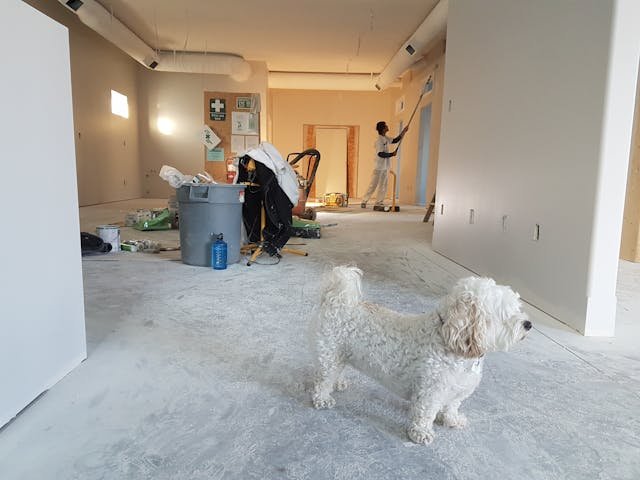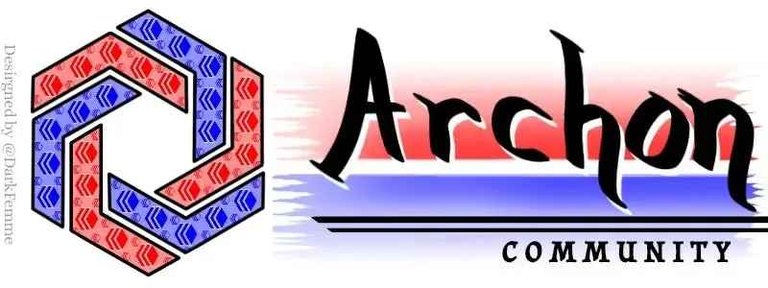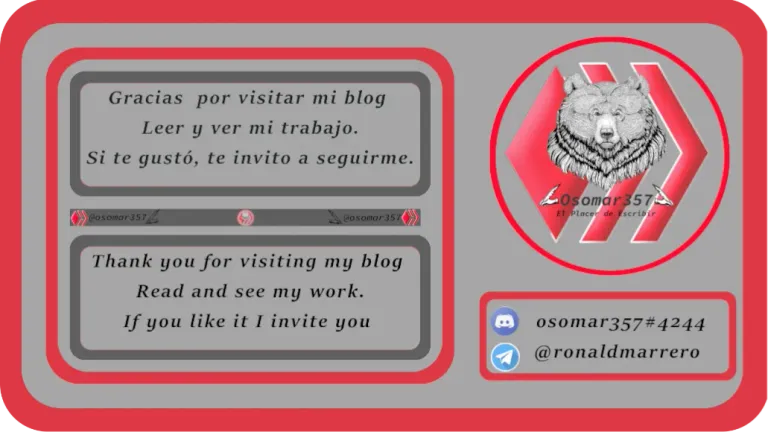Del lienzo a la brocha gorda. / From the canvas to the brush. ESP/EN

Del lienzo a la brocha gorda. | From the canvas to the brush. |
|---|---|
Cuando yo era pequeño, me llamaba mucho la atención la pintura al óleo y el dibujo, y de hecho, le pedí a mi mamá que me metiera en clases de pintura y dibujo, y recuerdo que cuando entré a estudiar, me regalaron pinceles, pinturas y hasta un caballete para poder colocar los lienzos que intentaba pintar. Pero la ilusión realmente duró muy poco, ya que, aunque me gustaba mucho, y de verdad me interesaba la pintura, era realmente malo en ella, realmente era pésimo dibujando y tuve que aceptar que simplemente no había nacido con ese don. Después de mi fracaso como seguidor de Botticelli, me llevé una sorpresa familiar, y fue que una de mis tías se casó con un pintor, y así pude ver un verdadero taller de pintura y ver a un artista trabajando en sus creaciones, pero eso es lo más cercano que estuve a ese tipo de pintura. Pero, como dice la canción, “la vida te da sorpresas”, y en mi adolescencia, uno de los primeros trabajos que conseguí fue en el sector construcción, con un amigo que había montado una empresa de electricidad. Y así aprendí ese oficio. Pero además de la electricidad, nos tocaba hacer los acabados de las obras que realizábamos y, por lo tanto, tuve que aprender a trabajar también con el mastique, el cemento, el yeso y, por supuesto, la pintura, ya que cuando hacíamos un trabajo, lo realizábamos con todo el profesionalismo posible y necesario para que el cliente quedara satisfecho. Eso significaba hacer las instalaciones nuevas, pero además dejar todo limpio e inmaculado para que el cliente hiciera su inspección; eso significaba no solamente hacer el trabajo de electricidad, sino también hacer el trabajo de remodelación y acondicionamiento del área trabajada. Y eso implicaba pintar. Posteriormente a ese trabajo, comencé a trabajar también con otro amigo, que tenía una empresa de pintura en el área de la construcción, y sin darme cuenta, de un día para otro, era un pintor de brocha gorda. Y de verdad, yo había pensado que el trabajo de puntura en la construcción era algo sencillo y sin mayor esfuerzo, pero en realidad estaba equivocado. Lo que pasa es que uno está acostumbrado a solo pasar una brocha sobre la pared y en ocasiones a pintar capa sobre capa de pintura. Pero cuando se hace a nivel profesional, es otra historia. Yo recuerdo que en mi primer día de trabajo, me sorprendí, ya que las paredes del apartamento que íbamos a remodelar estaban llenas de papel tapiz, así que iniciamos el trabajo del desmontaje del papel tapiz, y después de terminar esa parte, yo pensé que íbamos a tapar los huecos con masilla y empezar a pintar. Pero no fue así; lo que hicimos después fue lijar las paredes, en los lugares donde estaban más deterioradas. Después, preparamos un mastique y luego tratamos a todas las paredes del apartamento con mastique y después con lija, después la limpieza del polvo que deja la lija y la revisión de las paredes. Por último, comenzamos el proceso de la pintura. Al terminar, el jefe le dio al cliente un guante de algodón blanco, y lo llevó de inspección por todas las paredes del apartamento. Y así fue como realmente aprendí el oficio de pintor de brocha gorda, y todos los trucos que hay para hacer un trabajo profesional y adecuado que satisfaga al cliente más exigente que uno se pueda conseguir. Muchas gracias por leerme. | When I was little, oil painting and drawing caught my attention a lot, and in fact, I asked my mom to get me into painting and drawing classes, and I remember that when I entered to study, they gave me brushes, paints and even an easel to be able to place the canvases I was trying to paint. But the illusion really lasted very little, because, although I really liked painting, and I was really interested in it, I was really bad at it, I really sucked at drawing and I had to accept that I just wasn't born with that gift. After my failure as a follower of Botticelli, I got a family surprise, and it was that one of my aunts married a painter, and so I could see a real painting workshop and see an artist working on his creations, but that's the closest I came to that kind of painting. But, as the song says“ "life gives you surprises”, and in my adolescence, one of the first jobs I got was in the construction sector, with a friend who had set up an electricity company. And that's how I learned that trade. But in addition to electricity, it was our turn to do the finishes of the works we carried out and, therefore, I had to learn to also work with chewing gum, cement, plaster and, of course, painting, since when we did a job, we did it with all the possible and necessary professionalism so that the client would be satisfied. That meant doing the new installations, but also leaving everything clean and immaculate for the client to do his inspection; that meant not only doing the electrical work, but also doing the remodeling and conditioning work of the worked area. And that meant painting. After that job, I also started working with another friend, who had a painting company in the construction area, and without realizing it, from one day to the next, I was a brush painter. And really, I had thought that puncture work in construction was something simple and without major effort, but actually I was wrong. The thing is that one is used to just running a brush over the wall and sometimes painting layer upon layer of paint. But when it's done on a professional level, it's another story. I remember that on my first day of work, I was surprised, because the walls of the apartment that we were going to remodel were full of wallpaper, so we started the work of dismantling the wallpaper, and after finishing that part, I thought we were going to cover the gaps with putty and start painting. But it wasn't like that; what we did next was to sand the walls, in the places where they were most deteriorated. Then, we prepare a mastic and then treat all the walls of the apartment with mastic and then with sandpaper, then the cleaning of the dust left by the sandpaper and the revision of the walls. Finally, we started the painting process. When he finished, the boss gave the client a white cotton glove, and took him to inspect all the walls of the apartment. And that was how I really learned the trade of a brush painter, and all the tricks there are to do a professional and proper job that satisfies the most demanding client that one can get. Thank you very much for reading me. |
Si deseas participar en este concurso:
Translated with www.yandex.com

Crece en Hive con el apoyo de Crypto Company.

#Archon, es una comunidad que apoya proyectos, resuelve problemas, y te ayuda a crecer en Hive.
Visita su Discord, tienen un chat en español.





Es curioso cómo la vida nos lleva por caminos inesperados y nos da la oportunidad de aprender cosas nuevas.
Aunque no naciste con el don para la pintura artística, terminaste encontrando una manera de desarrollarte en el mundo de la pintura de brocha gorda.
Es admirable cómo te esforzaste por hacer un trabajo impecable y aprender todos los detalles necesarios para cumplir con las expectativas de los clientes.
!ALIVE
!WINE
Hola, sí con esos trabajos de remodelación y otras labores, me pagué la universidad, y hoy en día mato uno que otro tigre por saber hacer bien esos oficios.
!IDD
Congratulations @osomar357! You have completed the following achievement on the Hive blockchain And have been rewarded with New badge(s)
You can view your badges on your board and compare yourself to others in the Ranking
If you no longer want to receive notifications, reply to this comment with the word
STOP